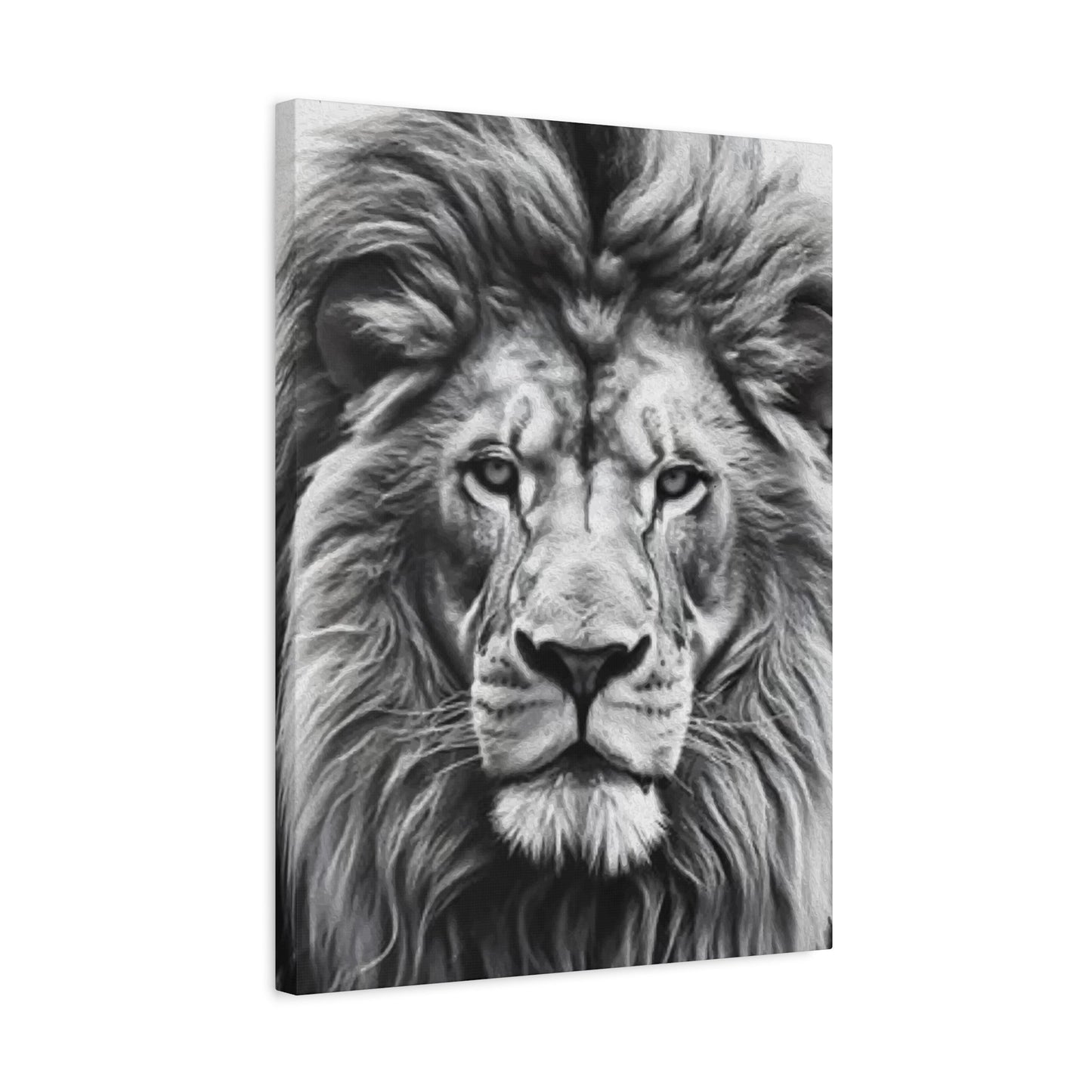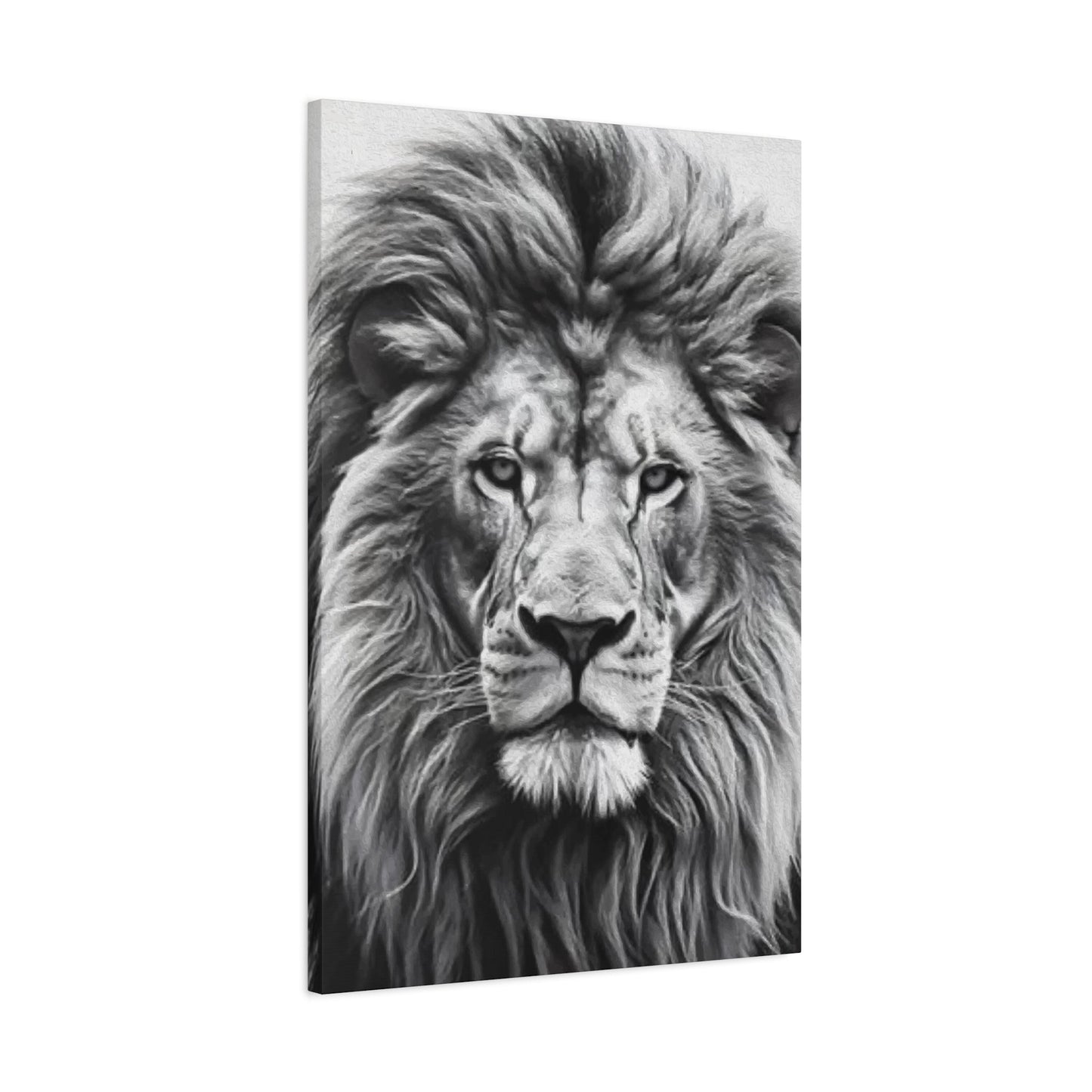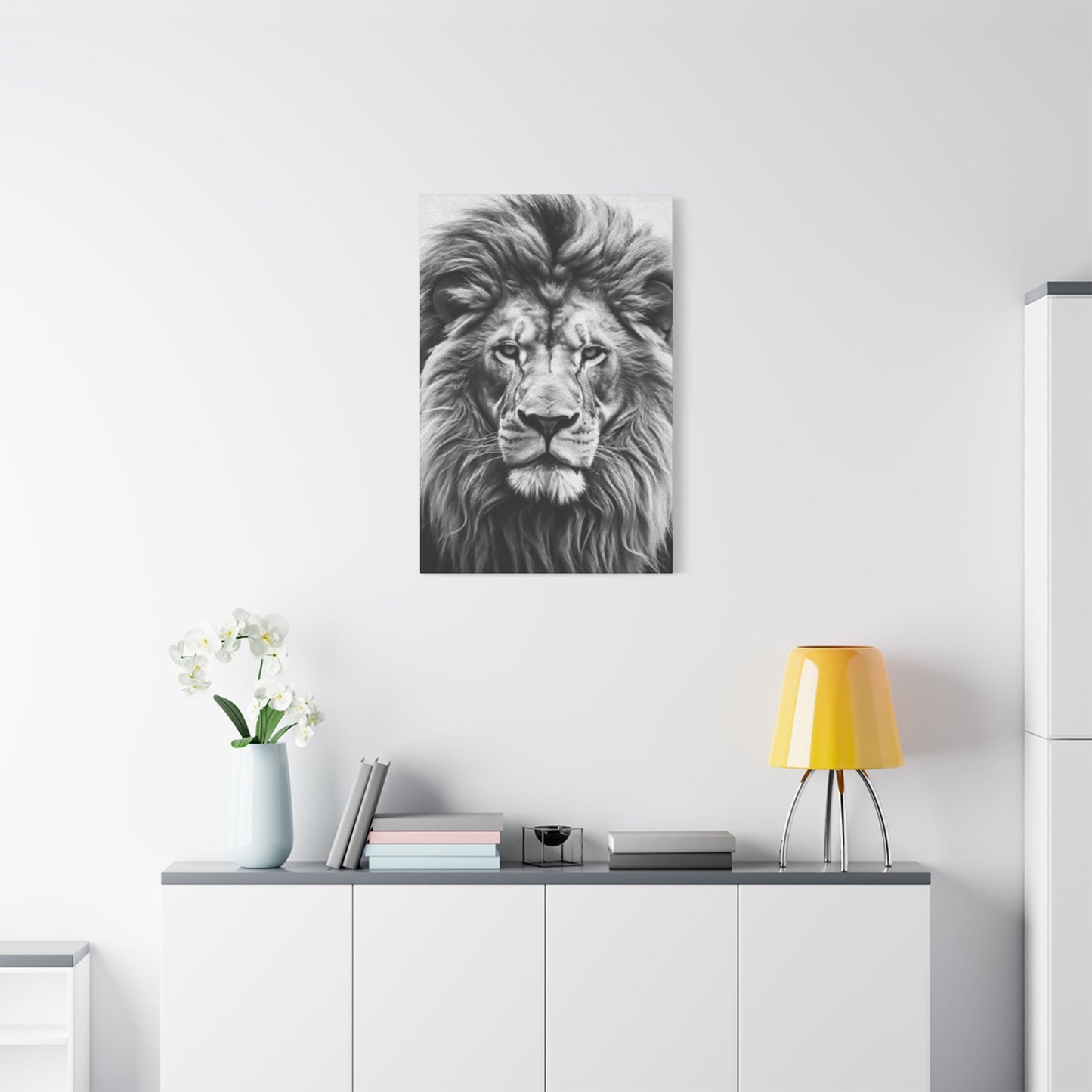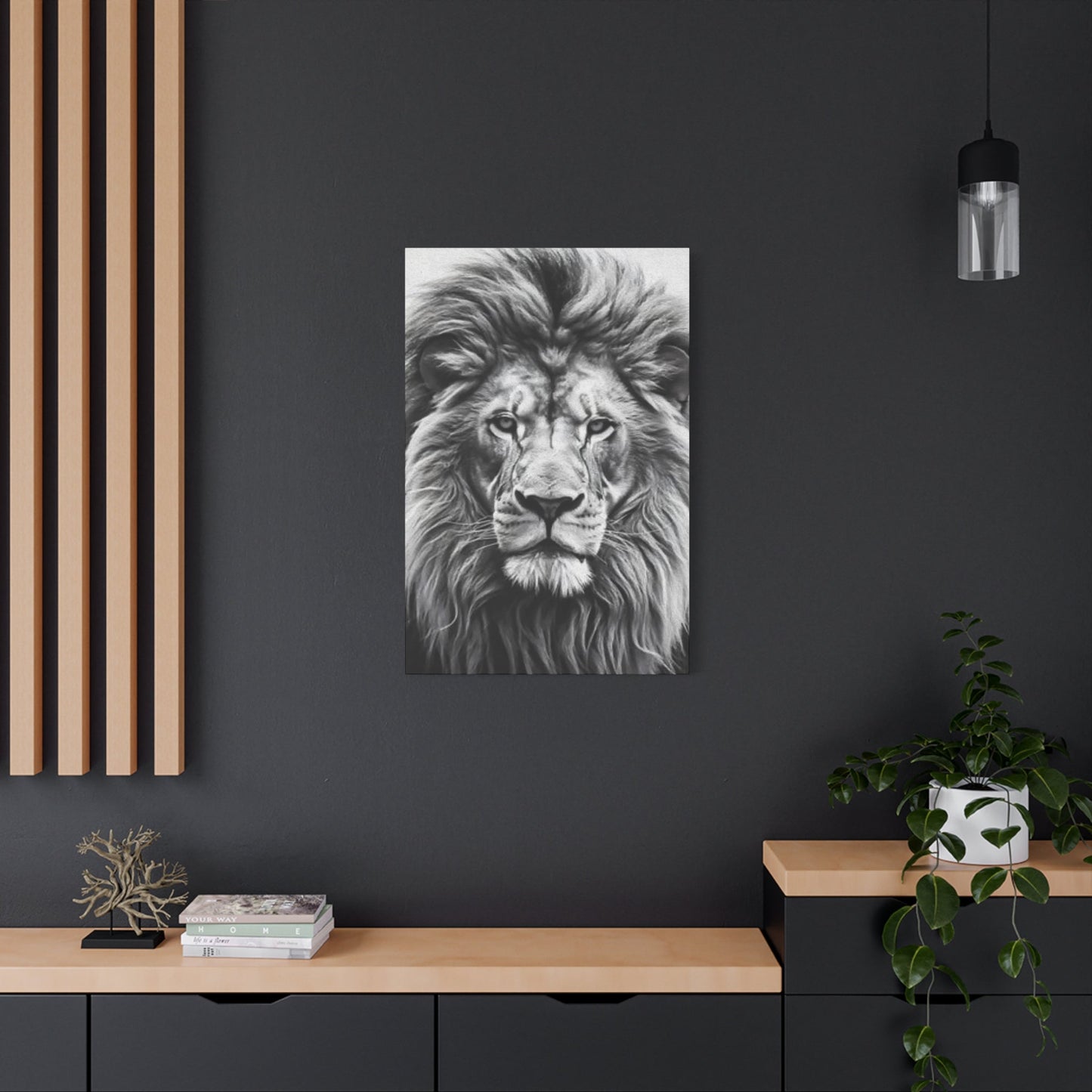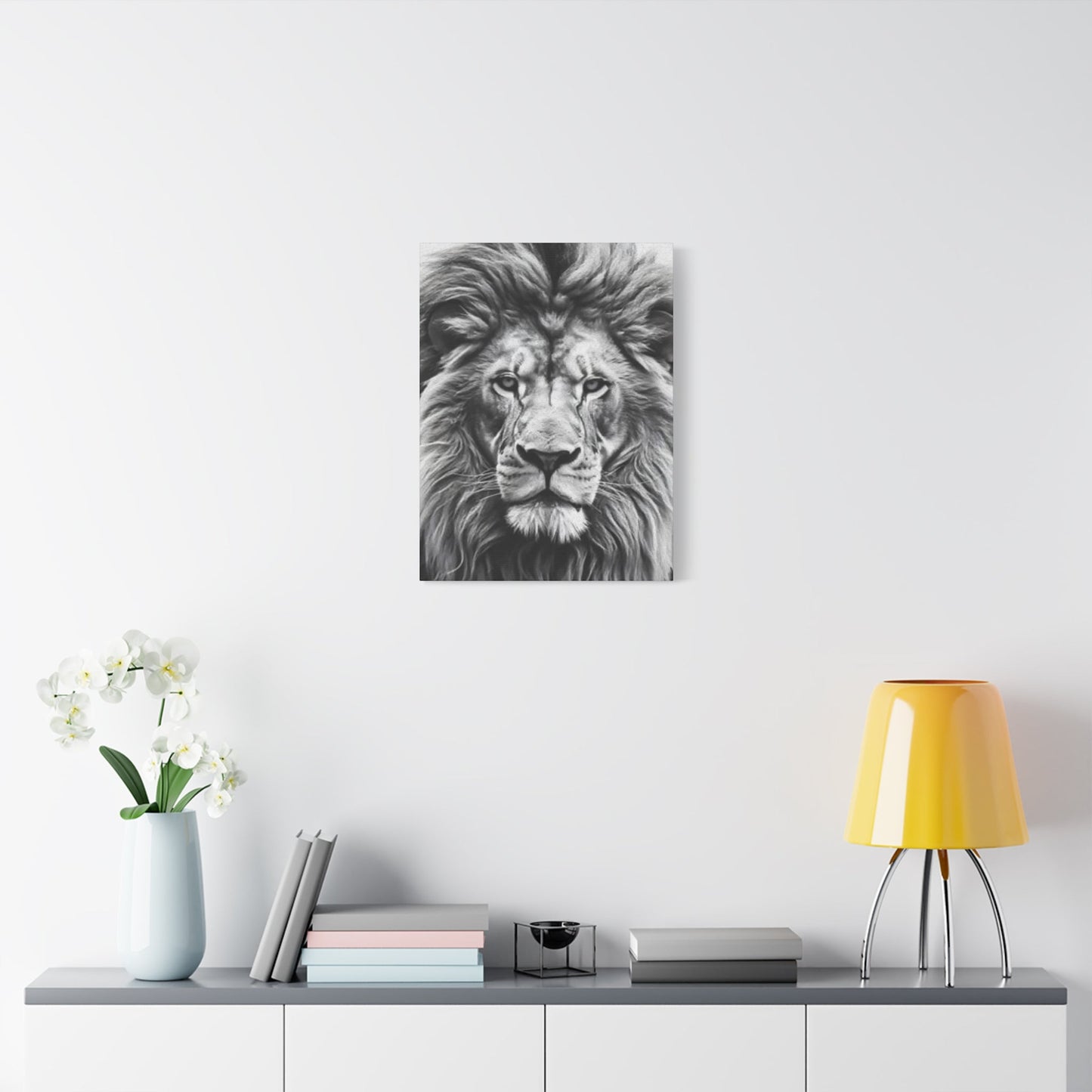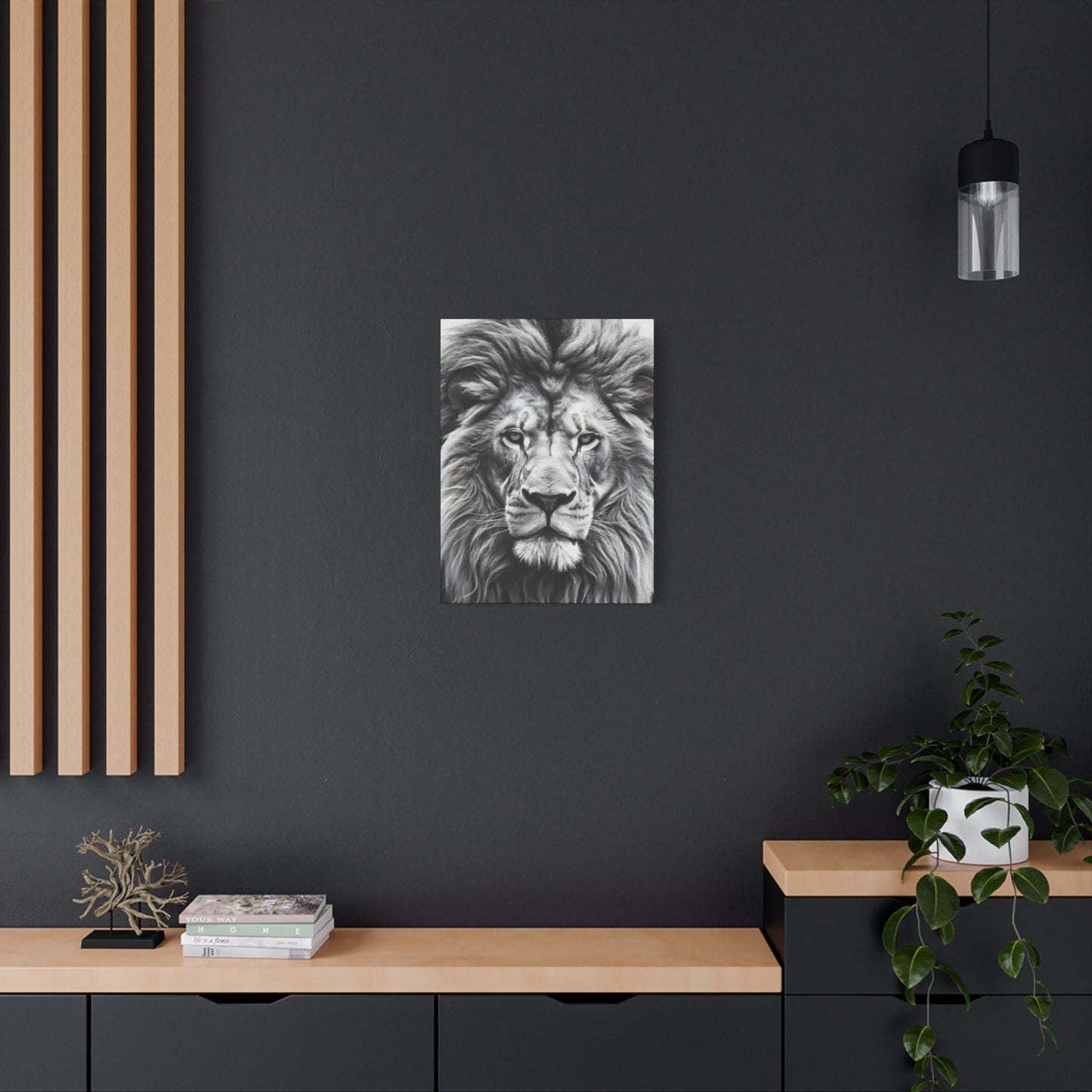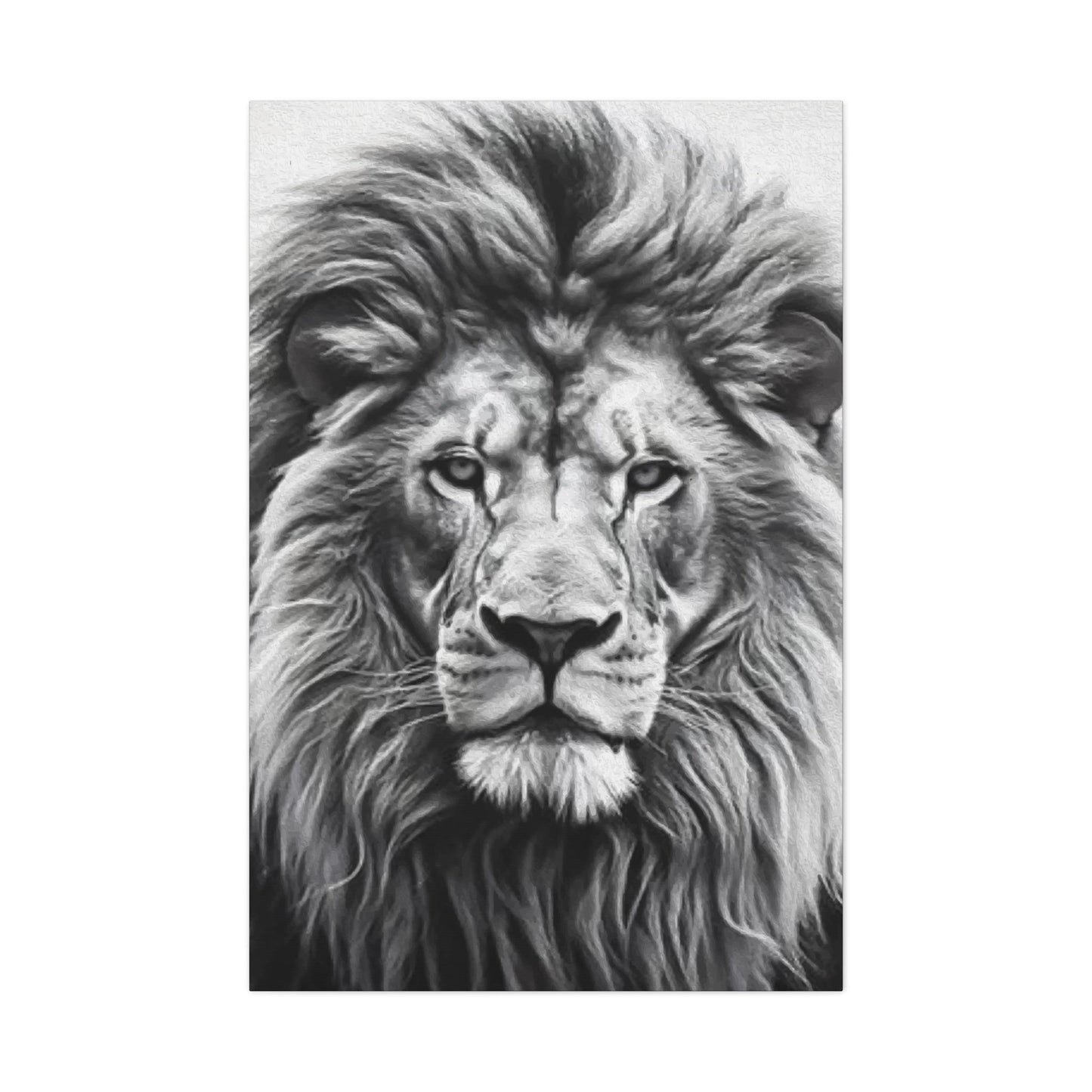Majestic Lion Wall Art: Exploring Black and White Photographic Symbolism
The magnificent presence of lions has captivated humanity for millennia, and their powerful essence continues to inspire contemporary home decoration through stunning visual representations. Lion wall art represents far more than simple decoration; it embodies strength, courage, leadership, and regal magnificence that can transform any living environment into a sanctuary of power and beauty. These artistic expressions featuring the king of beasts have evolved from ancient cave paintings to sophisticated modern masterpieces that grace homes, offices, and commercial establishments worldwide.
When considering artistic choices for residential or professional environments, lion-themed artwork stands out as a timeless selection that transcends cultural boundaries and design philosophies. The versatility of these majestic creatures in artistic representation allows for countless interpretations, from photorealistic portraits capturing every whisker and mane detail to abstract interpretations that distill the essence of feline power into bold strokes and vibrant colors.
The growing popularity of animal-themed decoration has positioned lion artwork at the forefront of contemporary design trends, offering homeowners and decorators an opportunity to incorporate natural beauty and symbolic meaning into their living environments. These artistic pieces serve as conversation starters, mood enhancers, and focal points that can anchor entire room designs while reflecting the personality and aspirations of their owners.
Modern lion wall art encompasses an extraordinary range of styles, materials, and presentation formats, ensuring that every aesthetic preference and budget consideration can be accommodated. From hand-painted canvases that showcase artistic mastery to high-quality photographic prints that capture the raw beauty of these magnificent animals, the options are virtually limitless for those seeking to incorporate feline majesty into their surroundings.
Current Lion Wall Art Trends
The landscape of lion-themed artistic expression continues to evolve, reflecting broader design movements while maintaining the timeless appeal of these magnificent creatures. Contemporary trends in lion artwork demonstrate a fascinating blend of traditional reverence for these animals and innovative artistic techniques that push creative boundaries.
Minimalist lion portraits have gained tremendous popularity, featuring clean lines and simplified color palettes that distill the essence of feline power into sophisticated artistic statements. These pieces often employ negative applied to create striking silhouettes that command attention while maintaining elegant simplicity. The minimalist approach allows the natural majesty of lions to speak for itself without overwhelming decorative elements.
Geometric lion art represents another significant trend, incorporating mathematical precision and angular designs to create modern interpretations of these ancient symbols of strength. Artists are experimenting with polygonal shapes, tessellated patterns, and crystalline structures to construct lion faces and full-body representations that appeal to contemporary sensibilities while honoring the subject matter.
Watercolor lion paintings continue to captivate audiences with their soft, flowing aesthetic that captures both the fierce nature and gentle beauty of these remarkable animals. The transparency and fluidity of watercolor techniques create ethereal effects that seem to breathe life into static images, making them particularly popular for residential environments where warmth and approachability are desired.
Digital art has revolutionized lion wall art creation, enabling artists to experiment with impossible color combinations, surreal environments, and fantastical elements that would be difficult or impossible to achieve through traditional mediums. These digital creations often feature lions in cosmic settings, surrounded by galaxies and nebulae, or integrated with abstract patterns that create mesmerizing visual experiences.
Mixed media approaches are increasingly popular, combining traditional painting techniques with photographic elements, textural additions, and even sculptural components to create multidimensional artworks. These pieces often incorporate metallic accents, raised textures, or embedded materials that add tactile interest and visual depth.
The trend toward oversized artwork has particularly benefited lion-themed pieces, as the commanding presence of these animals is naturally suited to large-scale presentation. Giant canvas prints and wall murals featuring lions create dramatic impact that can transform entire rooms and serve as architectural elements rather than mere decorative accessories.
Typography integration has emerged as a creative trend, combining powerful lion imagery with inspirational quotes, philosophical statements, or decorative text elements. These pieces often feature motivational messages about courage, leadership, and strength that reinforce the symbolic meaning traditionally associated with lions.
Vintage and retro-inspired lion art reflects a nostalgic appreciation for classic illustration styles and historical artistic movements. These pieces often employ sepia tones, aged textures, and classical composition techniques to create artworks that feel both timeless and contemporary.
The environmental consciousness movement has influenced lion art trends, with many pieces incorporating conservation messages or depicting lions in their natural habitats to raise awareness about wildlife protection. These artworks serve dual purposes as both decorative elements and educational tools that promote environmental stewardship.
Color therapy concepts have influenced modern lion art, with artists deliberately selecting color palettes believed to evoke specific emotional responses or energy frequencies. These pieces might feature lions in unexpected colors designed to promote relaxation, creativity, or vitality depending on their intended placement and purpose.
Bold Lion Wall Decor Concepts
Creating impactful lion-themed decoration requires understanding how to leverage the inherent power and majesty of these animals to maximum artistic effect. Bold approaches to lion artwork go beyond conventional representation to create statement pieces that dominate visual attention and establish strong design foundations for entire rooms.
Three-dimensional lion sculptures mounted as wall art provide unparalleled visual impact, creating shadows and depth that change throughout the day as lighting conditions shift. These sculptural pieces often feature partially emerged lion heads or full faces that appear to emerge from the wall itself, creating dramatic focal points that blur the line between decoration and architecture.
Metallic lion artworks utilizing copper, bronze, gold, or silver finishes create luxurious statements that reflect light beautifully while maintaining the regal associations traditionally connected with these magnificent animals. The reflective qualities of metallic surfaces add dynamic visual interest as viewers move around the room and lighting conditions change throughout the day.
High-contrast black and white photography featuring lions in dramatic lighting creates bold statements that work exceptionally well in modern and contemporary design schemes. These monochromatic pieces emphasize texture, form, and expression while eliminating color distractions that might compete with other room elements.
Backlit lion artwork incorporates LED lighting systems behind translucent or semi-transparent prints to create glowing effects that make the artwork appear luminous and alive. These pieces are particularly effective in dimly lit areas where they can serve as both artwork and ambient lighting sources.
Triptych and multi-panel presentations allow for expansive lion artwork that can span entire walls while maintaining visual coherence through connected imagery or complementary scenes. These installations might feature different perspectives of the same lion, sequential action shots, or complementary compositions that work together to create unified artistic statements.
Textural lion artwork incorporates raised elements, fabric applications, or carved details that invite tactile exploration while creating visual interest through shadow and light play. These pieces might feature synthetic fur elements, carved wooden details, or molded polymer additions that enhance the naturalistic aspects of lion representation.
Neon and LED accent lighting integrated with lion silhouettes create contemporary statements that combine traditional animal imagery with modern technological elements. These pieces are particularly effective in entertainment areas, home bars, or contemporary offices where bold, attention-grabbing artwork is desired.
Oversized close-up portraits focusing on lion eyes, manes, or facial features create intimate yet powerful connections between viewers and the artwork. These extreme close-ups reveal details typically invisible in full-body representations while creating emotional connections through direct eye contact or texture appreciation.
Mirror integration with lion artwork creates dual-purpose pieces that serve both decorative and functional roles while adding visual depth and light reflection to rooms. These pieces might feature lion silhouettes cut into mirrored surfaces or lion imagery surrounding functional mirror areas.
Interactive elements such as motion sensors that trigger lighting changes or sound effects can transform static lion artwork into dynamic installations that respond to viewer presence. These high-tech approaches are particularly popular in modern homes and commercial environments where innovation and interactivity are valued.
Layered presentation techniques create depth and complexity by mounting multiple transparent or translucent lion images at different distances from the wall. These installations create shifting visual effects as viewers change their observation angles and create sophisticated depth illusions.
Symbolism in Lion Art
The symbolic significance of lions in artistic representation extends far beyond their natural majesty, encompassing thousands of years of cultural, religious, and mythological associations that continue to resonate with contemporary audiences. Understanding these deeper meanings enhances appreciation for lion artwork while informing selection decisions based on intended symbolic messages.
Strength and power represent the most universally recognized symbolic associations with lions, making lion artwork particularly popular in environments where these qualities are valued or desired. Corporate offices, fitness facilities, and personal studies often feature lion art to reinforce messages of determination, capability, and leadership excellence.
Royal authority and noble bearing have connected lions with monarchy and aristocracy across cultures throughout history. This association makes lion artwork appropriate for formal dining rooms, executive offices, and other environments where dignity and elevated status are important considerations.
Courage and bravery symbolism makes lion art popular in military settings, law enforcement facilities, and personal environments where individuals seek inspiration to face challenges with determination. The lion's reputation as a fearless protector resonates with those who value heroic qualities and personal bravery.
Solar symbolism connects lions with sun worship, vitality, and life-giving energy across many ancient cultures. This association makes lion artwork particularly powerful in rooms where energy, creativity, and positive vibrations are desired, such as home offices, studios, or meditation areas.
Guardian protection imagery portrays lions as watchful protectors, making lion art popular for entryways, bedrooms, and family areas where safety and security are paramount concerns. These pieces often feature alert, vigilant lions that seem to watch over the occupants of the room.
Masculine energy and paternal authority find expression in lion imagery that emphasizes the protective and providing aspects of adult male lions. These representations are popular in men's studies, father's offices, or family rooms where traditional masculine virtues are celebrated.
Wisdom and leadership symbolism derives from the lion's role as the strategic leader of pride social structures. This makes lion artwork appropriate for boardrooms, libraries, and educational environments where intellectual authority and decision-making capabilities are emphasized.
Pride and self-confidence associations make lion art popular in personal bedrooms, dressing areas, and other private rooms where individuals seek daily inspiration to maintain positive self-image and personal dignity.
Resurrection and renewal symbolism, derived from various mythological traditions, makes lion artwork meaningful for meditation rooms, healing environments, or personal recovery areas where transformation and new beginnings are emphasized.
Loyalty and family devotion, reflecting the social bonds within lion prides, make lion art appropriate for family rooms, children's areas, and other environments where family unity and commitment are celebrated values.
Justice and moral authority symbolism connects lions with legal systems and ethical governance across cultures. This makes lion artwork popular in law offices, government buildings, and personal studies where fairness and moral judgment are important considerations.
Divine connection and spiritual power associations make lion art meaningful in religious or spiritual contexts where the connection between earthly strength and higher powers is emphasized through artistic representation.
DIY Lion Wall Art Projects
Creating personal lion artwork allows individuals to express their unique vision while developing artistic skills and creating meaningful decorations tailored to specific aesthetic preferences and room requirements. DIY projects range from simple crafts suitable for beginners to complex undertakings that challenge experienced artists.
Canvas painting projects offer accessible entry points for creating original lion artwork using acrylic or oil paints. Beginners can start with simplified lion silhouettes or abstract interpretations that focus on color and emotion rather than photorealistic detail. Advanced painters can attempt detailed portraits that capture individual character and expression through careful observation and technical skill development.
Stencil-based projects enable precise lion imagery creation without requiring freehand drawing abilities. Commercial stencils provide consistent results, while custom stencils cut from cardboard or plastic allow for personalized designs. Multiple layers of stenciling can create complex, multi-colored lion images with professional appearance despite simple execution techniques.
Collage techniques using magazine clippings, fabric scraps, or colored paper can create textural lion artwork that emphasizes pattern and color relationships rather than realistic representation. These projects are particularly suitable for children or adults seeking relaxing, meditative creative activities that don't require advanced technical skills.
Wood burning projects create rustic lion artwork on wooden panels using pyrography techniques that burn designs into wood surfaces. These pieces complement natural and cabin-style decorative themes while providing long-lasting artwork that develops character through aging and use.
Photography projects focusing on lion statues, zoo animals, or artistic interpretations of lion themes can create personalized artwork when combined with creative editing and presentation techniques. Digital manipulation can enhance colors, add effects, or combine multiple images to create unique compositions.
String art projects create geometric lion representations using colored threads stretched between nails or pins arranged in specific patterns. These pieces create interesting textural and shadow effects while requiring minimal artistic training and relatively inexpensive materials.
Mosaic projects using ceramic tiles, glass pieces, or other small materials can create stunning lion artwork that functions as both decoration and conversation pieces. These projects require patience and planning but result in durable, unique pieces that reflect personal creativity and dedication.
Fabric art projects incorporating quilting, applique, or embroidery techniques can create soft lion artwork suitable for bedrooms, nurseries, or casual living areas. These pieces add warmth and texture while demonstrating traditional craft skills adapted to contemporary aesthetic preferences.
Mixed media projects combining painting, photography, fabric, and found objects can create complex lion artwork that tells stories or expresses personal relationships with these magnificent animals. These pieces often become focal points for rooms and reflect the creator's unique artistic vision.
Digital art creation using tablets and styluses allows for experimental lion artwork that can be easily modified, reproduced, or shared. These projects are particularly suitable for tech-savvy individuals who enjoy working with digital tools and appreciate the flexibility of electronic media.
Recycled material projects create environmentally conscious lion artwork using discarded materials transformed into artistic statements. These pieces often carry additional meaning related to environmental stewardship and creative resourcefulness while producing unique decorative elements.
Paper sculpture projects create three-dimensional lion artwork using folding, cutting, and assembly techniques that transform flat materials into sculptural pieces. These projects can range from simple origami lions to complex architectural paper constructions that create dramatic visual impact.
Abstract versus Realistic Lion Representations
The artistic interpretation of lions spans a vast spectrum from photorealistic precision to highly abstract conceptual expressions, each approach offering distinct advantages and appeal for different aesthetic preferences, room requirements, and personal connections to the subject matter.
Realistic lion artwork emphasizes accurate representation of physical characteristics, natural coloring, and authentic behavioral expressions that capture the true essence of these magnificent animals. These pieces often feature meticulous attention to detail in mane texture, eye expression, facial structure, and body proportions that create immediate recognition and emotional connection with viewers.
Photographic realism in lion art showcases technical mastery and artistic skill while creating powerful emotional responses through direct representation of natural beauty. These pieces are particularly effective in traditional decorative schemes, educational environments, and settings where the goal is to bring natural majesty into civilized surroundings.
Hyperrealistic paintings that exceed photographic accuracy through artistic enhancement create lion artwork that appears more vivid and compelling than actual photography. These pieces often emphasize particular features such as eye intensity, mane magnificence, or muscular definition to create enhanced emotional impact.
Realistic wildlife art serves educational purposes while providing aesthetic pleasure, making these pieces popular in children's rooms, educational facilities, and environments where learning about natural world is valued alongside decorative function.
Abstract lion art emphasizes emotional essence, symbolic meaning, and artistic interpretation rather than literal representation, creating pieces that function more as pure art than wildlife documentation. These works often distill lion characteristics into color, form, and composition elements that evoke feelings and associations rather than specific recognition.
Geometric abstraction transforms lion imagery into mathematical relationships, angular forms, and structured compositions that appeal to contemporary aesthetic sensibilities while maintaining symbolic connections to the source material. These pieces work particularly well in modern and minimalist decorative schemes.
Color field abstraction uses large areas of color and simple forms to suggest lion presence and energy without literal representation. These pieces often emphasize the emotional and psychological impact of lions rather than their physical appearance, creating artworks that function as mood enhancers and atmospheric elements.
Expressionist approaches to lion art prioritize emotional communication over accurate representation, often featuring bold colors, dramatic brushstrokes, and distorted forms that convey the artist's emotional response to lions rather than their literal appearance. These pieces create strong visual impact and emotional resonance.
Cubist interpretations deconstruct lion imagery into multiple perspectives and geometric fragments that reassemble into complex compositions offering simultaneous views of different aspects and characteristics. These intellectually challenging pieces appeal to sophisticated artistic tastes and contemporary design sensibilities.
Impressionist lion art captures fleeting moments, lighting effects, and atmospheric conditions rather than precise details, creating pieces that emphasize mood and ambiance over documentary accuracy. These works often feature soft edges, color blending, and loose brushwork that creates gentle, approachable artistic statements.
Symbolic abstraction reduces lion imagery to essential symbolic elements such as manes represented as radiating energy, eyes depicted as spiritual windows, or bodies suggested through dynamic lines and forms. These pieces function as meditation focal points and spiritual inspiration sources.
Semi-abstract approaches combine realistic elements with abstract interpretation, creating pieces that maintain recognizable lion characteristics while incorporating artistic interpretation and creative enhancement. These hybrid works offer accessibility for traditional tastes while providing artistic sophistication for contemporary preferences.
The choice between abstract and realistic representation often depends on the intended room function, existing decorative elements, and personal preference for literal versus interpretive artistic expression. Realistic pieces tend to create stronger emotional connections with animal lovers and work well in family environments, while abstract interpretations often function better as pure decorative elements in sophisticated design schemes.
Best Materials for Lion Art Creation and Display
The selection of appropriate materials for lion artwork significantly impacts both the visual impact and longevity of these decorative pieces, with different materials offering unique advantages for specific applications, environments, and aesthetic goals.
Canvas remains the most popular substrate for lion paintings due to its texture, durability, and ability to accept various paint types while maintaining color vibrancy over time. High-quality stretched canvases provide excellent paint adhesion and can be easily framed or displayed unframed depending on aesthetic preferences.
Cotton canvas offers superior paint absorption and archival qualities compared to synthetic alternatives, making it ideal for valuable or permanent lion art installations. The natural texture of cotton canvas complements the organic subject matter while providing stable foundation for detailed work.
Linen canvas represents the premium choice for serious lion artwork, offering superior texture, durability, and paint adhesion qualities that justify higher costs for important pieces. Professional artists often prefer linen for commissioned works or gallery presentations requiring maximum longevity and visual impact.
Synthetic canvas materials provide cost-effective alternatives for casual or temporary lion art projects while offering consistent texture and adequate durability for most residential applications. These materials work particularly well for DIY projects or practice pieces.
Wood panels create rustic, natural-looking foundations for lion artwork that complement cabin, lodge, or natural decorative themes. Different wood types offer varying grain patterns and color tones that can enhance specific artistic approaches and color schemes.
Reclaimed wood materials add environmental consciousness and historical character to lion art projects while providing unique textures and aging patterns that enhance artistic authenticity and storytelling potential.
Metal surfaces including aluminum, steel, and copper create dramatic foundations for lion artwork that emphasize strength and durability while offering unique presentation opportunities through reflection and patina development over time.
Aluminum printing substrates provide vibrant color reproduction and weather resistance that make them suitable for both indoor and outdoor lion art installations while maintaining lightweight properties for easy mounting and relocation.
Glass and acrylic surfaces enable reverse painting techniques and translucent effects that create unique visual experiences unavailable with opaque materials. These surfaces are particularly effective for backlit installations and modern architectural integration.
Fabric substrates including silk, cotton, and synthetic materials create soft, approachable lion artwork suitable for bedrooms, nurseries, and casual living areas where warmth and comfort are prioritized over formal presentation.
Paper materials ranging from watercolor paper to archival art papers provide accessible, cost-effective foundations for lion artwork while offering specialized textures and absorption qualities for specific artistic techniques and media applications.
Digital printing materials including fine art papers, canvas, and specialty substrates enable high-quality reproduction of lion artwork while providing consistency, affordability, and customization options not available with traditional media.
Stone and ceramic surfaces create permanent, weather-resistant lion artwork suitable for outdoor installations, architectural integration, and high-traffic areas where durability is paramount while maintaining artistic appeal and cultural significance.
Protective coatings and varnishes extend the life of lion artwork regardless of substrate choice, providing UV protection, moisture resistance, and surface hardening that preserve color vibrancy and prevent physical damage from handling and environmental exposure.
The choice of materials should consider intended display location, expected lifespan, budget constraints, and aesthetic integration with existing room elements to ensure optimal results that meet both artistic and practical requirements.
Matching Lion Art with Different Room Aesthetics
Successfully integrating lion artwork into existing room designs requires understanding how these powerful images interact with various decorative styles, color schemes, and functional requirements to create harmonious rather than competing visual elements.
Traditional decorative schemes provide natural settings for realistic lion artwork that emphasizes classical beauty, natural accuracy, and timeless appeal. Rich wood frames, warm color palettes, and detailed representations work exceptionally well in formal dining rooms, traditional living areas, and classic study environments where elegance and sophistication are paramount.
Antique and vintage-style lion art featuring sepia tones, aged textures, and classical composition techniques complement traditional furniture, oriental rugs, and rich fabric treatments while adding historical character and cultural depth to formal room designs.
Contemporary settings benefit from clean-lined lion artwork with simplified compositions, neutral color palettes, and modern framing approaches that complement sleek furniture, minimalist accessories, and architectural emphasis on form and function over ornate decoration.
Geometric and abstract lion representations work particularly well in contemporary environments where artistic interpretation is valued over literal representation, creating sophisticated focal points that demonstrate cultural awareness and aesthetic sophistication.
Modern decorative schemes accommodate bold, experimental lion artwork featuring unconventional colors, digital manipulation, or mixed media approaches that complement high-tech accessories, industrial materials, and cutting-edge design concepts.
Oversized lion prints and multi-panel installations create dramatic impact in modern environments with high ceilings, open floor plans, and minimalist furniture arrangements that provide ample wall areas for significant artistic statements.
Rustic and cabin-style decorative themes naturally accommodate lion artwork emphasizing natural settings, earth-tone color palettes, and organic materials that reinforce connections between indoor comfort and outdoor adventure.
Wood-mounted lion art, metal sculptures, and nature photography complement log furniture, stone fireplaces, and natural textile applications while maintaining thematic consistency with outdoor-inspired decorative concepts.
Industrial design schemes benefit from metal-based lion artwork, high-contrast photography, and urban-influenced interpretations that complement exposed brick, metal fixtures, and concrete elements while adding organic warmth to potentially harsh architectural elements.
Vintage industrial lion art featuring weathered metals, distressed finishes, and urban themes creates interesting contrasts between natural subject matter and civilized presentation contexts.
Minimalist environments require carefully selected lion artwork that supports rather than overwhelms simplified aesthetic goals through restrained color palettes, clean compositions, and sophisticated presentation approaches that maintain visual tranquility.
Single-color lion silhouettes, negative artwork, and ultra-simplified representations work effectively in minimalist settings where every visual element must justify its presence through exceptional quality and perfect aesthetic integration.
Eclectic decorative approaches provide opportunities for creative lion art selection that might combine multiple styles, periods, or cultural influences within single rooms, requiring careful balance to avoid visual chaos while maintaining interesting complexity.
Bohemian and artistic environments welcome experimental lion artwork featuring unconventional materials, cultural fusion elements, and personal creative expression that reflects individual artistic sensibilities rather than commercial decorative formulas.
Color coordination between lion artwork and existing room elements requires consideration of both dominant and accent colors to ensure harmonious integration that enhances rather than competes with existing decorative investments.
Lion Art as Powerful Focal Points
Creating effective focal points using lion artwork requires strategic placement, appropriate sizing, and complementary design elements that direct attention and establish visual hierarchy within room compositions while maximizing the dramatic impact these magnificent animals naturally provide.
Central wall placement positions lion artwork as primary focal points that immediately capture attention upon room entry while establishing dominant visual themes that influence all other decorative decisions and room navigation patterns.
Above fireplace installations create natural focal point locations that combine architectural emphasis with artistic impact, particularly effective when lion artwork complements mantelpiece styling and surrounding architectural details while benefiting from firelight enhancement during evening use.
Behind furniture arrangements such as sofas, beds, or dining tables, lion artwork creates backdrop focal points that provide visual weight and interest without interfering with functional furniture use while establishing strong compositional foundations for room arrangements.
Stairway wall installations utilize vertical architectural features to create dramatic focal points visible from multiple room levels while taking advantage of extended viewing distances that enhance the impact of large-scale lion artwork.
Entry hall presentations establish immediate focal points that welcome guests while setting mood and aesthetic expectations for entire homes. Lion artwork in these locations makes powerful first impressions while demonstrating homeowner personality and design sophistication.
Gallery wall integration combines multiple lion pieces or mixes lion art with complementary subjects to create complex focal points that reward extended viewing while maintaining visual coherence through consistent themes or presentation approaches.
Lighting enhancement multiplies focal point effectiveness through strategic illumination that emphasizes texture, color, and detail while creating dramatic shadows and highlights that change throughout day and evening hours.
Track lighting systems enable adjustable illumination that can emphasize different aspects of lion artwork depending on time of day, room function, or personal preference while providing professional gallery-quality presentation.
Accent lighting including picture lights, wall sconces, or integrated LED systems create intimate illumination that draws attention to specific artwork features while providing ambient room lighting that enhances overall atmosphere.
Size relationship considerations ensure that lion artwork functions effectively as focal points by maintaining appropriate proportions relative to wall dimensions, ceiling height, and surrounding furniture elements that could compete for visual attention.
Oversized pieces create commanding focal points suitable for large rooms with high ceilings and substantial furniture arrangements, while properly proportioned smaller pieces work effectively in intimate settings where subtle emphasis is more appropriate.
Color contrast manipulation enhances focal point effectiveness through strategic use of complementary or contrasting colors that make lion artwork stand out from surrounding wall colors and decorative elements without creating jarring visual conflicts.
Textural emphasis adds focal point strength through materials and presentation techniques that create shadow, reflection, or tactile interest that draws attention and encourages closer examination while maintaining visual interest from various viewing distances.
Complementary element coordination supports focal point effectiveness through careful selection of nearby accessories, furniture, and decorative objects that reinforce rather than compete with lion artwork while maintaining balanced visual weight distribution.
Viewing angle optimization considers furniture arrangements and traffic patterns to ensure that lion artwork focal points remain visible and impactful from primary seating areas and room circulation paths without requiring awkward viewing positions.
Historical Evolution of Lion Wall Art
The artistic representation of lions has evolved through millennia of human civilization, reflecting changing cultural values, artistic techniques, and symbolic interpretations while maintaining consistent fascination with these magnificent predators across diverse societies and historical periods.
Ancient cave paintings represent humanity's earliest artistic documentation of lions, created by prehistoric peoples who coexisted with these predators and understood their power through direct experience rather than symbolic association. These primitive artworks established fundamental visual vocabulary still recognizable in contemporary lion art.
Egyptian civilization elevated lion imagery to divine status through temple paintings, tomb decorations, and architectural sculptures that portrayed lions as solar deities, protective spirits, and symbols of royal power that connected earthly authority with cosmic forces.
Hieroglyphic lion representations developed sophisticated symbolic language that communicated complex religious and political concepts through stylized imagery that influenced artistic traditions across ancient Mediterranean and Near Eastern cultures.
Greek and Roman artistic traditions adapted lion imagery for architectural decoration, mosaic artworks, and sculptural elements that emphasized heroic associations, military prowess, and imperial authority while developing realistic representation techniques that influenced European artistic development.
Classical mythology integrated lions into narrative artworks depicting heroes, gods, and legendary adventures that established storytelling traditions still evident in contemporary lion art that combines natural beauty with symbolic meaning and cultural reference.
Medieval European art incorporated lions into religious contexts, heraldic designs, and illuminated manuscripts that emphasized Christian symbolism, noble lineage, and spiritual authority while maintaining artistic techniques derived from classical traditions.
Heraldic lion designs developed sophisticated symbolic language for identifying family lineages, political allegiances, and social status through standardized poses, colors, and compositional elements that influenced decorative arts and architectural ornamentation.
Renaissance period artwork elevated lion representation through anatomical accuracy, artistic technique advancement, and integration with humanistic themes that celebrated both natural beauty and cultural sophistication through masterful execution and intellectual content.
Leonardo da Vinci and other master artists created definitive lion studies that demonstrated observational skills, artistic technique mastery, and intellectual curiosity about natural world phenomena that established artistic standards still respected in contemporary wildlife art.
Colonial period artwork reflected European artistic traditions adapted to new environments while maintaining symbolic associations with authority, courage, and cultural identity that reinforced social hierarchies and political structures in developing societies.
Victorian era lion art emphasized romantic interpretations, exotic adventure themes, and imperial associations that reflected expanding global awareness and cultural confidence while developing mass production techniques that democratized artistic appreciation.
Industrial revolution impacts enabled mass production of lion artwork through printing technologies, photography development, and manufacturing processes that made artistic decoration accessible to growing middle-class populations seeking cultural refinement and personal expression.
Modern artistic movements including Impressionism, Cubism, and Abstract Expressionism revolutionized lion representation through experimental techniques, psychological interpretation, and pure artistic expression that prioritized emotional communication over literal representation.
Contemporary digital technologies enable unprecedented artistic possibilities through computer graphics, digital manipulation, and reproduction techniques that expand creative potential while maintaining connections to historical traditions and symbolic meanings.
Environmental consciousness movements have influenced modern lion art through conservation themes, habitat documentation, and educational content that combines artistic appreciation with wildlife protection advocacy and environmental stewardship messaging.
Black and White Lion Art Appeal
Monochromatic lion artwork possesses unique aesthetic qualities that transcend color limitations to create powerful visual statements emphasizing form, texture, contrast, and emotional expression while offering versatile decorative options suitable for diverse design schemes and personal preferences.
High contrast black and white photography captures dramatic lighting effects, texture details, and emotional expressions that might be diminished or complicated by color elements, creating pure artistic statements that emphasize essential characteristics rather than surface appearances.
Professional wildlife photographers often prefer black and white presentation for lion portraits that emphasize character, wisdom, and dignity through facial expressions, eye contact, and compositional elements that create intimate connections between subjects and viewers.
Fine art photography techniques including dodging, burning, and contrast manipulation enhance black and white lion images through artistic interpretation that goes beyond documentary recording to create emotional and aesthetic experiences that function as wall art rather than simple wildlife documentation.
Charcoal and graphite drawings create handmade black and white lion artwork that demonstrates artistic skill while providing unique textures and mark-making qualities unavailable through photographic reproduction, appealing to collectors who value original artwork and traditional techniques.
Pen and ink illustrations offer detailed black and white lion representations that combine precision with artistic interpretation through line quality, cross-hatching techniques, and compositional approaches that create sophisticated artistic statements suitable for traditional and contemporary settings.
Scratchboard techniques create dramatic black and white lion artwork through subtractive processes that reveal white lines from black surfaces, resulting in unique textural effects and highlight emphasis that creates distinctive visual characteristics and artistic appeal.
Woodcut and linocut prints provide bold, graphic black and white lion images that emphasize strong shapes and simplified details while demonstrating traditional printmaking techniques that connect contemporary artwork with historical artistic traditions and craft heritage.
Digital black and white conversion enables artistic manipulation of color photographs through selective contrast adjustment, texture enhancement, and compositional refinement that creates artwork specifically optimized for monochromatic presentation rather than simple color elimination.
Versatility in decoration makes black and white lion art suitable for virtually any color scheme, decorative style, or room function without creating color conflicts or requiring specific coordination with existing elements, providing flexible decorative solutions for changing design needs.
Timeless aesthetic appeal ensures that black and white lion artwork remains visually relevant regardless of changing color fashion trends, decorative style evolution, or personal taste development, making these pieces sound long-term decorative investments.
Professional appearance qualities make black and white lion art particularly suitable for office environments, medical facilities, legal practices, and other professional settings where sophisticated, non-distracting artwork is desired without sacrificing visual impact or personal expression.
Gallery-worthy presentation standards are easier to achieve with black and white lion art through consistent framing approaches, lighting techniques, and wall preparation that creates unified exhibition quality without requiring complex color coordination or specialized presentation materials.
Architectural integration benefits from black and white lion artwork that complements rather than competes with interior color schemes, allowing architectural features, furniture, and accessory elements to provide color interest while artwork supplies form and compositional structure.
Economic advantages include lower printing costs, simplified framing requirements, and reduced color matching concerns that make high-quality black and white lion art more accessible to budget-conscious decorators without sacrificing artistic impact or professional appearance.
Emotional intensity often appears enhanced in black and white lion artwork through elimination of color distractions that might diffuse attention from facial expressions, body language, and compositional elements that communicate power, dignity, and natural majesty.
Lion Art in Professional Office Environments
Corporate and professional settings benefit significantly from carefully selected lion artwork that reinforces organizational values, creates positive psychological impacts, and establishes sophisticated aesthetic environments while maintaining appropriate professional standards and cultural sensitivity.
Leadership symbolism makes lion artwork particularly relevant for executive offices, boardrooms, and management areas where decision-making authority, strategic thinking, and organizational guidance are primary functions requiring confidence, courage, and visionary perspective.
Motivational impact provides daily inspiration for employees, clients, and visitors who encounter lion artwork that reminds them of personal strength, professional capability, and achievement potential while creating positive psychological associations with work environment and organizational culture.
Conversation starters emerge naturally from well-chosen lion artwork that provides neutral topics for client meetings, employee interactions, and professional networking situations while demonstrating cultural awareness and aesthetic sophistication without controversial political or religious implications.
Status indicators communicate organizational success, stability, and commitment to quality through investment in professional artwork that demonstrates attention to detail, cultural refinement, and resource allocation priorities that reflect well on business reputation and client confidence.
Stress reduction benefits result from natural imagery that provides psychological relief from urban environments, technical focus requirements, and high-pressure decision making through visual connections to natural world beauty and symbolic strength associations.
Cultural universality makes lion artwork appropriate for international business environments where diverse cultural backgrounds must be accommodated without offense while maintaining meaningful symbolic content that transcends specific cultural traditions or religious beliefs.
Professional photography featuring lions in natural settings creates sophisticated office artwork that demonstrates environmental awareness, global perspective, and appreciation for natural world conservation while maintaining dignified, non-controversial decorative content.
Abstract lion interpretations provide artistic sophistication suitable for contemporary office environments while avoiding literal animal representation that might seem inappropriate for serious business contexts requiring purely professional aesthetic approaches.
Size appropriateness considerations ensure that lion artwork complements rather than overwhelms office functionality through careful selection of proportional pieces that enhance rather than dominate work environments while maintaining visual impact and decorative purpose.
Reception area presentations create positive first impressions for clients and visitors while establishing organizational personality and values through artistic selections that communicate strength, reliability, and professional competence without aggressive or intimidating overtones.
Conference room installations provide focal points that encourage productive discussions while avoiding distracting elements that might interfere with meeting effectiveness, creating environments that balance professional functionality with inspiring visual content.
Lighting coordination enhances office lion artwork through professional illumination systems that maintain consistent visibility throughout varying daylight conditions while creating dramatic emphasis that transforms utilitarian work environments into sophisticated business settings.
Maintenance considerations favor durable lion artwork that maintains appearance quality despite air conditioning systems, cleaning requirements, and high-traffic exposure while providing long-term decorative value without ongoing restoration or replacement expenses.
Acoustic benefits emerge from canvas-based lion artwork that provides sound absorption qualities helping to reduce noise levels in busy office environments while serving decorative functions and improving overall work environment quality for employee productivity and client comfort.
Flexibility requirements suggest modular or easily relocatable lion artwork that can adapt to changing office layouts, departmental reorganizations, or facility relocations without requiring permanent installation commitments or expensive modification processes.
Conclusion
Majestic lion wall art in black and white photography captures the raw power and profound symbolism of the king of the jungle in a timeless and striking manner. This monochromatic style strips away distractions, allowing viewers to focus on the intricate details of the lion’s form—the texture of its mane, the intensity of its gaze, and the strength conveyed through its posture. The absence of color enhances the dramatic effect, evoking a sense of dignity, mystery, and authority that resonates deeply in any space.
The symbolism behind lion imagery is rich and multifaceted, often representing courage, leadership, nobility, and resilience. When rendered in black and white photography, these qualities are emphasized with a classic elegance that transcends trends and fads. Such artwork not only commands attention but also inspires viewers to connect with the inner strength and determination embodied by the lion. It’s an ideal choice for spaces where motivation, focus, and empowerment are valued—whether in homes, offices, or creative studios.
Furthermore, black and white lion photography offers remarkable versatility in interior design. Its neutral palette allows it to complement a wide range of décor styles, from minimalist modern to rustic or industrial aesthetics. The stark contrasts and sharp lines can serve as a bold centerpiece or blend harmoniously with other monochrome or color-accented elements. This adaptability makes majestic lion wall art a timeless investment that enhances any environment with sophistication and meaning.
In addition, black and white lion portraits often convey a sense of narrative and emotion, inviting viewers to interpret stories of survival, protection, and majesty. This storytelling aspect enriches the artwork, turning a simple decorative piece into a profound visual experience. Whether capturing a tranquil moment or a powerful roar frozen in time, these photographs elevate the ambiance of a room and provoke thoughtful reflection.
In conclusion, majestic lion wall art in black and white photography is a captivating blend of artistic elegance and symbolic depth. Its dramatic imagery and timeless style make it a compelling addition to any space seeking strength, beauty, and inspiration. By incorporating this powerful art form, you invite not only the presence of the lion but also the qualities it represents—courage, leadership, and resilience—into your everyday life.













